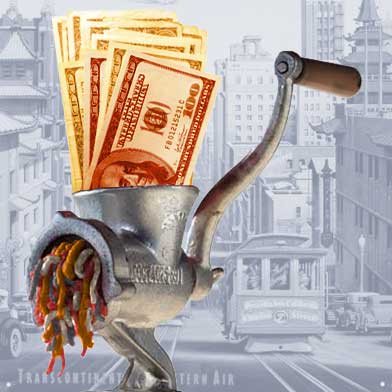 Cabbie Changes
Cabbie Changes
SFMTA has some changes in the works for its cab policies and, after 60 irate cab drivers flooded a SFMTA board meeting early last month, those changes have been pushed to the forefront of the agency’s already crowded agenda.
The biggest change is a fare hike that would mean more money for drivers. Driving a cab in San Francisco has rarely been more expensive–gas prices are through the roof and drivers don’t get benefits like health insurance or matched retirement savings. Under the new fare structure, the initial drop rate would remain the same but there would be increases in the price for driving distance and wait times, a gasoline surcharge and a fee for using a dispatch service.
Simultaneous with the fare hike, SFMTA is considering rolling out an increase in cab service–presumably though the issuance of more medallions. An increase in medallion sales is already likely in the works to finance a taxi hailing smartphone app that the agency is developing and planning on providing to taxi companies free of charge.
While those changes are largely beneficial for individual drivers (despite some grumbling about increased fares pricing working class San Franciscans out of taxi service), there’s another major change in the works that has many of the city’s drivers seeing red instead of their customary yellow.
SFMTA has implemented a 5% fee on credit card transactions to pay for the installation of backseat credit card terminals. Since drivers are strictly limited by what they can charge customers, this fee would come directly out of their bottom line.
The use of credit cards in cabs has seen a threefold increase over the past five years and now accounts for nearly one third of all taxi payment transactions. The threat of a strike in response to the imposition of this credit card fee was largely SFMTA’s impetus for considering a corresponding fare hike–essentially passing the cost of the terminals from the drivers on to the passengers themselves.
There have also been some privacy concerns over the installation of an electronic tracking system that records everywhere a cab travels, however this issue hasn’t gotten quite as much traction with drivers as ones that directly affect their wallets.
In an effort to smooth all of this over so SFMTA isn’t faced with the nightmare scenario of simultaneous taxi and Muni operator strikes (you might want to go get your bike tuned up now, just in case), the agency is hosting a series of town halls focusing exclusively on taxi issues:
Tuesday, May 10
First meeting: 12:30 pm to 4pm
Second meeting: 5:30pm to 9pm
Wednesday, May 11
First meeting: 12:30pm to 4pm
Second meeting: 5:30pm to 9pm
Monday, May 16
First meeting: 12:30pm to 4pm
Second meeting: 5:30pm to 9pm
All meetings to be held at 1 South Van Ness Avenue, 2nd Floor, Atrium.
Muni Contract Talks May Be Entering Their Final Days
Despite the June 30th deadline for the talks between the Muni operators union and SFMTA management, negotiations for a new contract may already be approaching their endgame.
After the passage of Prop G last year, Muni operators no longer have their wage rates automatically set at the second highest for any transit service nationally. In the face of a looming budget deficit, SFMTA is taking this opportunity to squeeze as much as possible out of a new contract with the union–even going as far as hiring a high-powered PR firm to handle media outreach to strengthen its position with the public during negotiations. In turn, the union’s membership has voted to authorize a strike, even though such an action is explicitly forbidden by the city charter.
If the two sides don’t come to an agreement before the fiscal year concludes at the end of June, they’re required to submit their proposals to an independent arbiter who will then come to a decision.
However, there’s a two week public review period mandated before the SFMTA board can approve any agreement. Meaning that if negotiators on both sides feel like they aren’t going to be able to find common ground, the parties may enter binding arbitration as early as May 23.
Broken Buses
Question: What percentage of buses were found to have some kind of defective part of maintenance violation?
Answer: 70%
That’s most of them!
The violations, found during a recent CHP inspection, ranged from defective brakes to corroded batteries. But only one of the buses was in such lousy condition that it had to be immediately removed from the service. The rest were fine! Or close enough! Whatever!
Happy riding!
Ways The Examiner Describes The Amount of Time It Takes San Francisco To Install A Single Stop Light
“About as twice as long as a presidentially appointed commission took to complete an exhaustive report on the Sept. 11, 2001, attacks.”
“Roughly 4 percent of the average U.S. citizen’s life.”
“35 Months”
“When people say Rome wasn’t built in a day, they’re usually referring to lengthy reform movements or massive public works projects. Traditionally, the phrase does not apply to the installation of a single traffic signal. Except in San Francisco.”
Want more news, sent to your inbox every day? Then how about subscribing to our email newsletter? Here’s why we think you should. Come on, give it a try.









